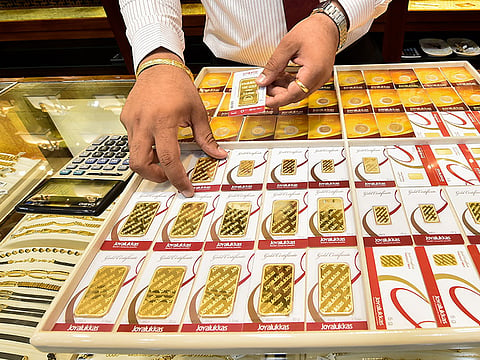Gold faces challenges to safe haven status
In current Covid-19 sparked crisis, bullion prices have been through a bit of a see-saw

After the 2008 Global Financial Crisis, I started considering gold as a hedge against crises for my own portfolio. My research included other safe haven currencies that investors usually rush into whenever there is a looming crisis or even a business downcycle.
When I finally arrived at a formula for my portfolio, I made sure that a certain percentage of all holdings are in gold. I did not invest in physical gold, however. Instead, I bought shares in an Exchange Traded Fund (ETF) that is backed by physical gold.
I found what happened afterwards quite interesting. Before the most recent sell-off, the portfolio had been generating cash income through dividends and also realised humble capital gains. The gold ETF holdings made smaller gains over the years, given the relatively high purchasing price, before increasing significantly when the price of gold exceed $1,700 (Dh6,239) per ounce.
It then stabilised at about 15 per cent in capital gains. Compared to holdings of physical gold, and if gold was purchased in late 2018 at a price north of $1,200 per ounce, the investment would have yielded more than 40 per cent in positive gains.
In all cases, the sell-off was big enough to eliminate all hedging capacity, even when gold’s price was in the $1,600-1,700 per ounce range, and to create substantial losses that ate up part of the invested capital.
What is even more remarkable here is that the sell-off did not generate high enough demand for gold to sustain its price above the $1,700 threshold, with the price of gold dropping to $1,500 per ounce level at the time of writing.
What happened?
Taken down by uncertainty
First, there is a psychological element to be registered here. The spread of coronavirus and its impact on global supply chains, i.e. manufacturing and consumption activities, added further uncertainty to a global financial system that was barely cutting it in terms of economic growth.
Current financial stimuli introduced by governments could help wither the storm, but what economies will be left standing, once the spread is upended, is far from conclusive.
Factor in oil moves
Secondly, the drop in oil prices also added to the uncertainty due to three reasons. One, cheaper oil, subject to how fast those lower prices can be factored into contracts, can provide a lifeline to the battered aviation industry because of the coronavirus spread. Two, cheaper oil can lower costs for both manufactures and consumers, both being negatively impacted by the spread too.
The third reason though is more complex than the other two. That is, low oil prices, if sustained over long periods of time, could be financially unfeasible for governments that need higher oil prices to balance their budgets.
Low oil prices will also discourage investments into existing and new conventional oilfields, which may offset some of the positive gains from the lower oil prices.
The same applies to the highly leveraged shale oil producers in the US, which, despite the ultra-low interest rates, may find it hard to refinance their debt because of the unclarity surrounding the direction that oil prices will take. This could change if there was consolidation in the shale industry through mergers and acquisitions, a likely outcome if the price of oil stays below profitable levels.
Someone’s selling
Back to gold, the current relative stability in its price is proof of what it takes to cause an uptick in the price of gold. In other words, it was bulk purchases by central banks that moved the price of gold from $1,200 to $1,600 per ounce level. The most recent swing to $1,700 per ounce level was triggered by investors fleeing into gold, a price level that could not be maintained as central banks started offloading their gold to finance their stimuli.
Gold as a hedge is still relevant today, even when short-term results do not show for that

In conclusion, gold has historically been used to hedge against business downcycles and financial crises. Gold as a hedge is still relevant today, even when short-term results do not show for that.
However, and pertaining to the shifting dynamics in the global financial system, different events have had varying impacts on the price of gold. What is certain here is that the price of gold has been trending upwards for the past 18 months and that it will continue to do so in the foreseen future. Gold’s role as a hedge against financial crises, nonetheless, is being increasingly challenged.
The last thought that I want to leave you with: Can stocks of companies in hygiene and streaming services be used as hedge against health-related financial downcycles and crises?
— Abdulnasser Alshaali is a UAE based economist.
Sign up for the Daily Briefing
Get the latest news and updates straight to your inbox







